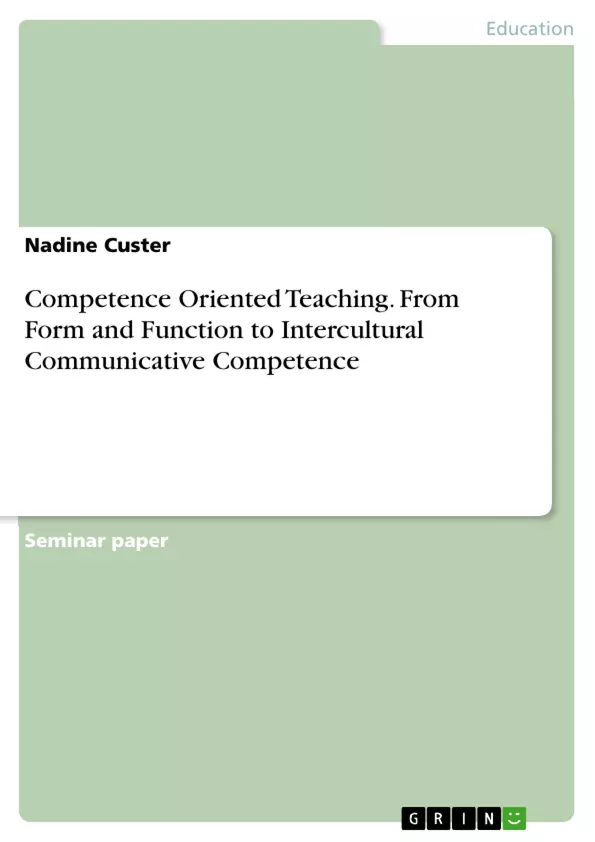I will start to talk in chapter one about the necessary terms “Common European Framework” and its levels, the “Bildungsstandards” and the German curriculum for English as a second language. I will give an insight of the main points of these systems and will show the differences and similarities between them. In chapter two I will show a “competence oriented lesson” in view of the listening and reading skills and their competence development by the backward planning method.
Inhaltsverzeichnis (Table of Contents)
- Introduction:
- Chapter 1: theoretical part
- 1.1 The Common European Framework
- 1.2 Levels of CEF
- 1.3 CEF and Bildungsstandards
- 1.4 Bildungsstandards and the Curriculum
- Chapter 2: teaching lesson
- 2.1 The learner group:
- 2.2 Object analysis
- 2.3 Didactically considerations
- 2.4 Methodical considerations
- Chapter 3: Conclusion
- Chapter 4: References
- Chapter 5: Appendix
Zielsetzung und Themenschwerpunkte (Objectives and Key Themes)
This term paper aims to clarify the importance of the "Common European Framework of Reference" in view of second language acquisition. It focuses on the planning of a competence-oriented lesson and how this approach provides a better alternative to traditional planning methods. The paper explores the relationship between the CEF, the German educational standards ("Bildungsstandards"), and the German curriculum for English as a second language. * The importance of the Common European Framework of Reference (CEF) in second language acquisition * The application of "backward planning" in competence-oriented teaching * The comparison and contrast of the CEF, Bildungsstandards, and the German curriculum for English as a second language * The development of listening and reading skills in a competence-oriented lesson * The benefits of competence-oriented teaching in fostering intercultural communicative competenceZusammenfassung der Kapitel (Chapter Summaries)
Chapter 1: theoretical part
This chapter introduces the Common European Framework of Reference (CEF), a system that sets criteria for learning, teaching, and assessing language competencies. The CEF aims to ensure transparency and comparability of language proficiency across European countries. This chapter further discusses the CEF's levels, its relationship to the German educational standards ("Bildungsstandards"), and its relevance to the German curriculum for English as a second language.Chapter 2: teaching lesson
This chapter focuses on the application of competence-oriented teaching in a real-world lesson. It outlines the learning group, the content of the lesson, and the didactic and methodological considerations involved in planning and delivering a competence-oriented lesson. The chapter emphasizes the "backward planning" method and its benefits for achieving learning objectives.Schlüsselwörter (Keywords)
This term paper focuses on the development of intercultural communicative competence in the context of English as a second language. It explores the application of competence-oriented teaching, the Common European Framework of Reference (CEF), and the German educational standards ("Bildungsstandards") as foundational frameworks for achieving this goal. It also examines the importance of "backward planning" and its implications for lesson planning and delivery.
Excerpt out of 20 pages
- scroll top
- Quote paper
- Nadine Custer (Author), 2012, Competence Oriented Teaching. From Form and Function to Intercultural Communicative Competence, Munich, GRIN Verlag, https://www.grin.com/document/263870
Look inside the ebook



